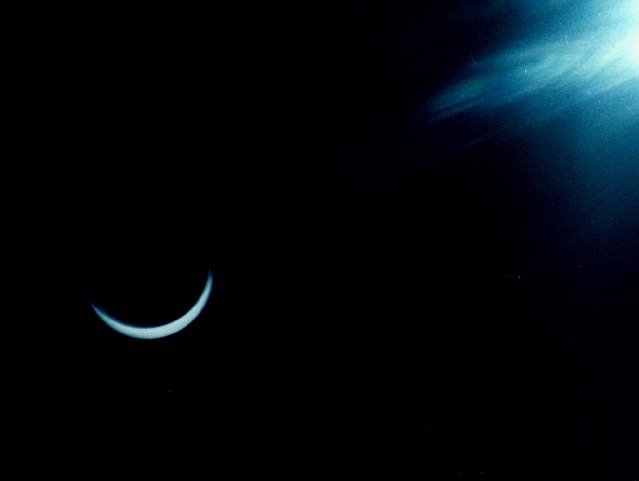

If you've fingered my I.D. elsewhere then you'll probably realize I'm into the Space business and especially communication, in the broadest sense of that word, indeed I have worked extensively in the Space arena; if your'e interested in this aspect of discovery and its evolution, then there are a number of interesting and authoratitive sites, some of which I've included and you can find further on.
Newsbite (12th Feb 2016) - Philae:
So, we hear that the comet-lander Philae from the Rosetta mission has been
accepted as 'officially dead'. That rather short headline omits a view of
how so much has been achieved during this project, from its conception
through its realisation to its realisation and the return of results.
It's actual journey began in 2004 with the launch, but although not so prevalent in the media for us to read much of the work was really put in way before this, with the original planning and assignment of different parts of the project, with the design of the instruments and the flight platform, the matching for and the organisation of the launch, setting up of global cooperation, the extremely tough pre-launch testing and more. So many people from various institutions and different companies with contracts working together under the umbrella of ESA to realise the final craft ready for launch.
So there it was back in 2004, some 1200kg plus around 1700kg of fuel for its journey - and little Philae at just 100kg incorporating 10 scientific sensors and instruments - and that journey had to go right on track for over a decade to arrive near the target comet, with all the risks and unknowns on the way. Then to top all of that, to let off Philae to land on that comet from an altitude of 22km - through all sorts of 'nasty stuff' that the spinning comet might be throwing off, with virtually no steering(!), aiming for a carefully spot to make for a landing that could be survived intact ... yes, it all came together!
The scientific returns and the images that were sent together are so revealing, allowing a degree of understanding while giving rise to a few more questions: such is the nature of the best of human exploration.
I do sincerely hope that some of these results, these puzzles, these images, cause more younger people to follow an education which leads them into various fields which can contribute further to human discovery and exploration - it is knowledge and understanding (of all sorts) which enables the development of a better life for all human kind.
Before I go into any of my more serious thinking, I'll show just a couple of images which I found interesting to make, taking advantage of another of my persuits, photography. First, in 1999 I went to the Jungfrau glacier in Switzerland to take some photos of the solar eclipse there, preferring to be above the clouds than under them. Here's one from when it was at a maximum there:-

Next, in September 28th the year 2015, there was an eclipse of the Moon coincident with its close orbit with the Earth, popularly referred to as the "Blood Moon" due to its coloration by refraction through the Earths atmosphere: here's an image I captured very early that morning:-
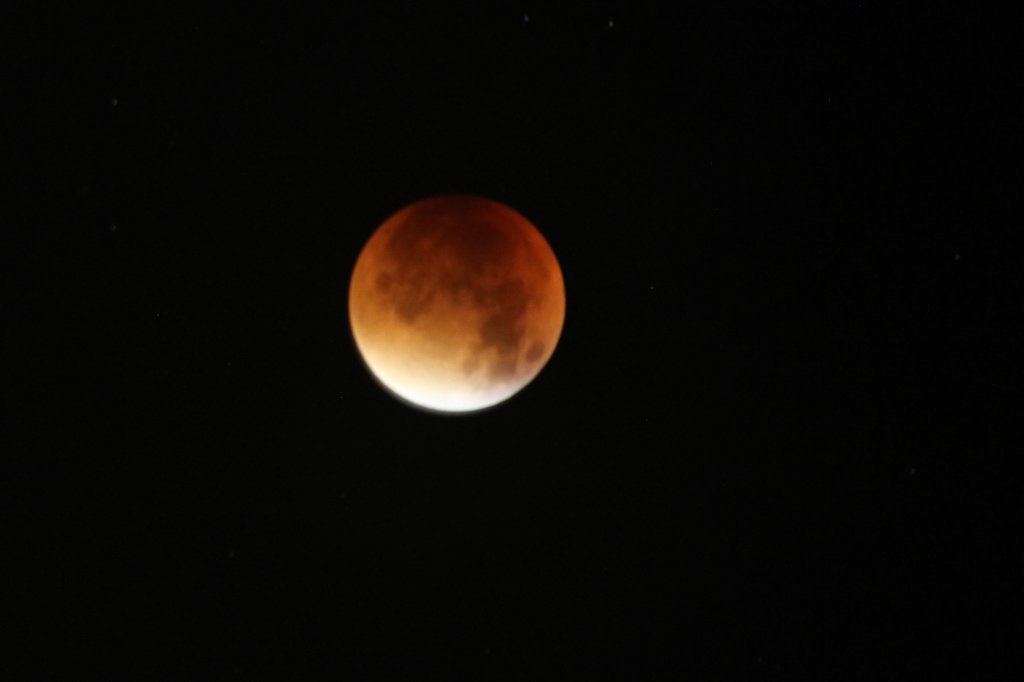
More of the series of that lunar eclipse can be found at my 'lunatics' (!) link here on my website.
Then there was the planetary trio (in observational terms, due to the line-up of the planets in their orbits around the sun as seen from the Earth) of Jupiter, Venus and Mars. Their closely lining up could easily be observed in a clear sky and here's an image I took at around 6am in the morning on 27th October here:-
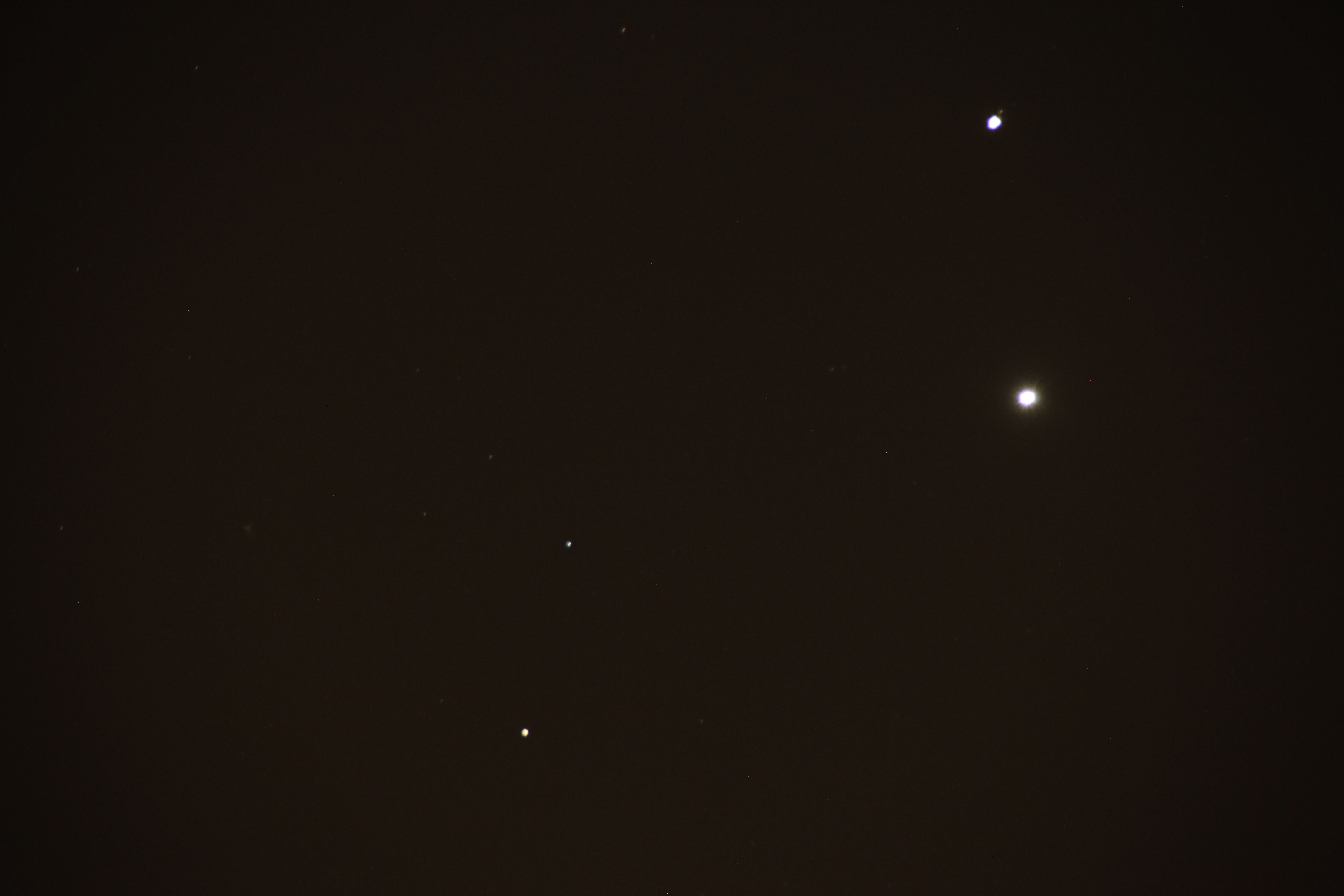
There's also a few more of that alignment with different exposures under the link here that I put up today for that series.
Now to a few more serious thoughts...
Note that the whole of this calculation represents in any case a major error in that it addresses various propulsion stages as one combined entity, whereas in truth it should be calculated separately addressing each individual stage since only then do the variables turn true. Anyway, his result of solving this equation (apparently omitting the subtraction in (1- Wp/Wi) ) of dV = -32.2 x 228 x ln(662/1380) is 3520 feet/S... now let us here do this extremely simple piece of math: 662/1380 = 0.4797 on my HP-41CX scientific calculator (with a fresh battery pack in). Natural log (ln) of 0.4797 = -0.73646, we'll remember that.
Now, -32.2 (near enough to 32.174) times 228 = -7341.6 and when we multiply this with -0.73646 we get 5392.9428, let's just say 5393 - which is very different indeed from his figure of 3520... This is treatment of simple fundamental mathematics, and his further publishings illustrate in my eyes a spectacularly distorted view of the truth of things, even of the laws of physics, so much so that I would consider it as a severe pollution of scientific knowledge.
I most certainly wouldn't want such a person teaching math in my local junior school, let alone be employed in any position of authority within the aerospace industry.
Another example: Mr. Mike Bara, has many blurred (and blurring?) views of things such as Faraday Cages; these Faraday cages are used typically in the laboratory to prevent disturbance (usually at radio frequencies) to what is being examined inside them from sources of electromagnetic radiation which reside outside them. They are constructed from a mesh of wire of appropriate diameter which may include apertures which are maximally fractional amounts in diameter of the wavelength of the highest frequency radiation concerned.
Such wire should have the minimum resistivity as possible, and good wire conductors are copper or if for less expense then aluminium, both of which are used in practice (silver would also present good conductivity but be expensive hence the use of silver-plated copper in some R.F. applications). All of this is factual, and qualified, established professional practice. Let's look at Mr. Baras' thinking on such a basic piece of equipment.
In his view of the world, a faraday cage (his book 'The Choice', (2011) p. 139,) made of lead, ("...the entire chamber was surrounded by lead shielding known as a Faraday Cage. [this] shields the chamber inside from any static electrical fields meaning that there is no electromagnetic energy in the Faraday cage at all.") - this implies a solid sheet of lead which would be an awfully heavy construction which would in any case require extensive support so as to avoid the lead 'sagging' under its own weight. Noteable in that statement is his use in the same expression of 'shielding' and 'electromagnetic energy' - this is confusion itself since 'shielding' is used to resist ionising radiation as opposed to screening (e.g. as a Faraday screen) which is used to resist electromagnetic radiation, and the two are not the same.
Quite apart from that, (a) lead has by far a much higher resistance than either copper or aluminium and in addition to that, (b) of concern in construction lead is in fact an extremely 'soft' metal. To add to these considerations even further, the idea of a Faraday cage is to attenuate the passage of electromagnetic radiation by a certain amount, expressed in a dB power ratio which is a logarithmic term as normally used in radio engineering. If a (typical) cage has 70dB attenuation at the frequency[ies] of interest, this means that inside the cage some ten-millionth of the external radiation can enter.
It might sound a lot but consider that your typical radio set playing merrily in the kitchen is doing so from a received signal of perhaps half a millionth of a volt on a resistance of 50 ohms which is a very small fraction of a milliwatt indeed. Quite a practical consideration, totally contradicted by a statement that no electromagnetic energy enters, at all.
All of this is general knowledge, measurable and provable, of most radio engineers on the planet. A more complete view of such flawed thinking is well-summarised in
this point-by-point critique of the work in a very readable manner. The two examples above are but a fraction of the flawed presentation of 'information' put forward without regard to conventional peer review nor to qualified, educated criticism.
One of several extremely interesting activities I was involved in during my career was zero-G parabolic test-flight. A number of experiments / evaluations I was directly concerned with were in the context of the Crew interface, that is the (in politically correct terms!) Human-Machine Interface sometimes referred to the MMI - Man-Machine-Interface for use in a manned space environment.
Most common tasks which we can perform without even thinking here in 1G (one gravitational unit, the amount by which the Earth appears to 'pull us down to the ground' as it were) become quite a different concern in zero-G: in many cases use has to be made of one limb at least (arm, leg, foot, hand) to 'stabilise' the body whilst a task is carried out using another.
Simply think of the law that every action results in an equal and opposite re-action, so (e.g.) if you push a switchbutton forwards with a force of 1 kilogram for a time then there is an equal reaction of 1 kilogram pushing you backwards for a time, and put that into a manned-space working environment. Therefore what appear to be simple tools or other objects such as a notepad or pointing device (e.g. mouse) have to be adapted and tested for evaluation and eventually used in zero-G.
Parabolic test-flight allows the test and evaluation of such a device to be performed, provided the design of the test and the parameters drawn from it are carefully considered. This is one example from something I was directly responsible for, and it demanded some special attention but also gave a very exhilarating set of experiences in zero-G.
Here's a couple of pictures taken during preparation, integration, test and flight during one of the flight campaigns.
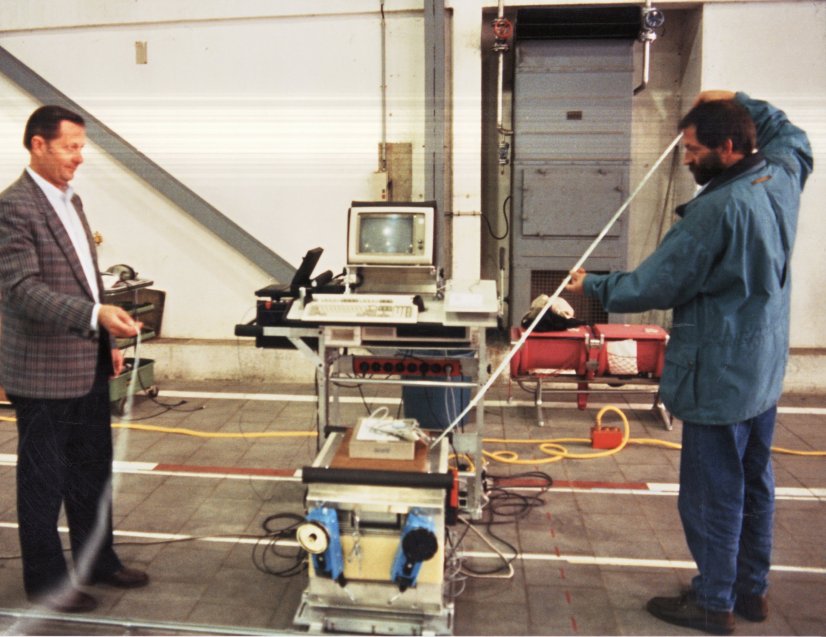
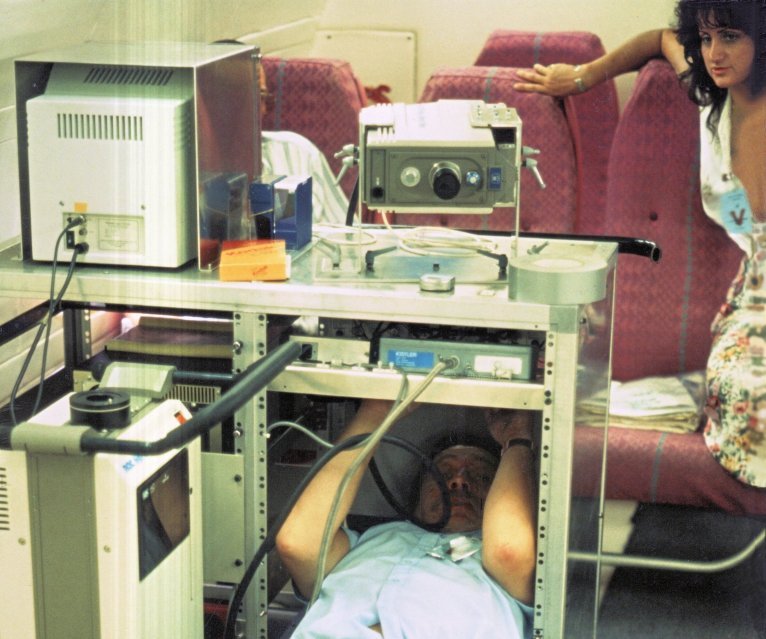
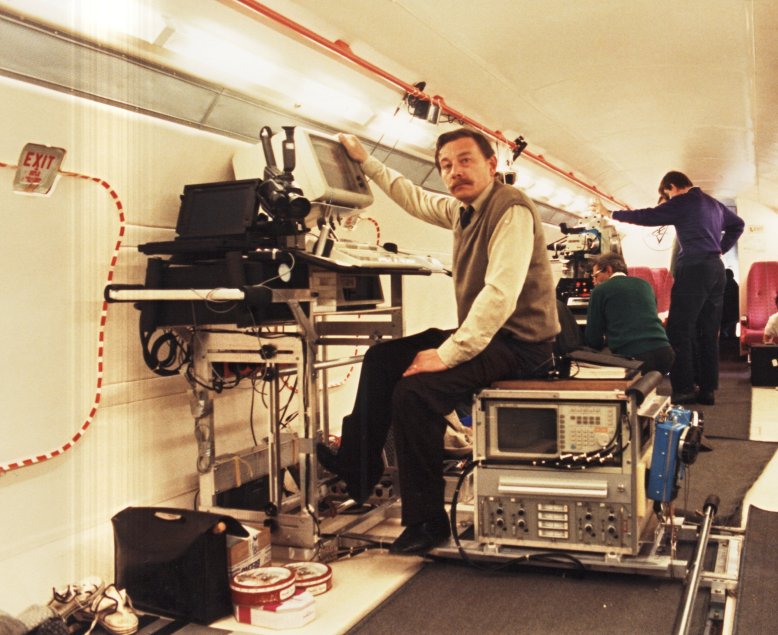
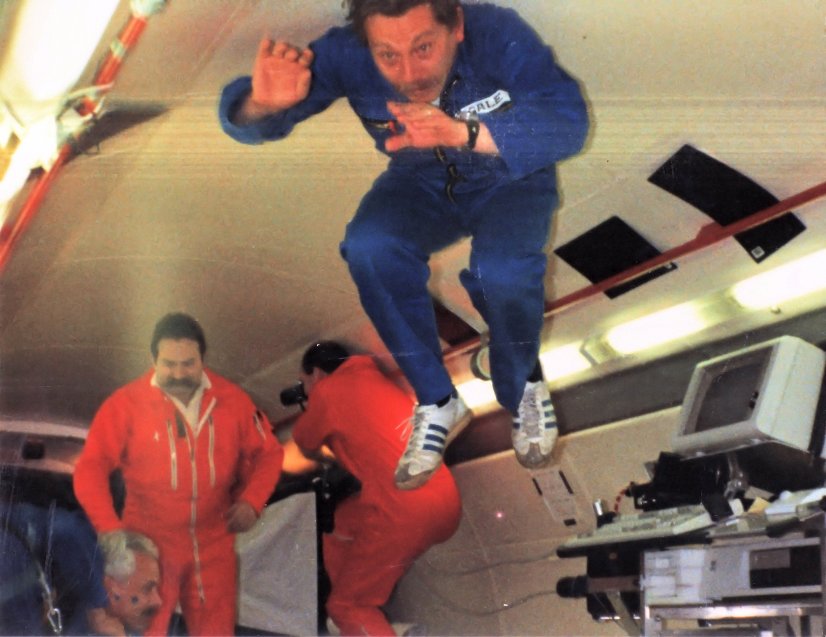
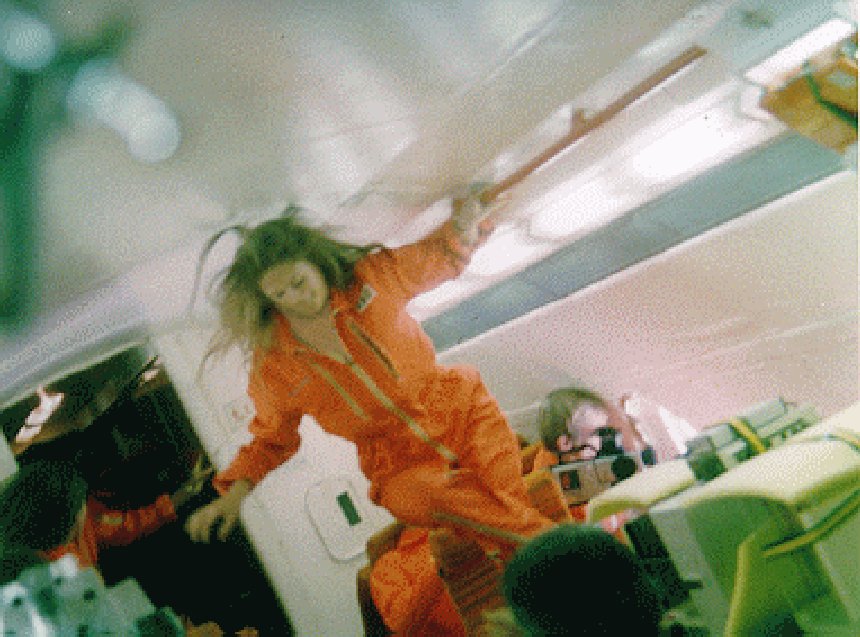
Progressing, I know some people in the Space business think that human spaceflight is a waste of money and other resources to the detriment of science; yet others think that Mankind's endeavours in Space are simply the extension of the natural desire and drive to explore the unknown. Without sitting easily on any fences, I happen to believe that both spheres of activity are important and actually contribute to each other Space science in the form exploratory missions to other planets, examination of the cosmos, and observation of the Earth does, and will continue to, benefit us by allowing us to understand the processes around us and to best plan our collective futures. Human (astronaut / cosmonaut) operation, supervision and observation of experiments aboard space platforms also contributes a great deal to our understanding; and in dealing with the unexpected or unplanned there is still no machine or process superior to the human thought process applied on-the-spot.
If you are interested in human spaceflight activities, such as the International Space Station (ISS) and other enterprises, take a look at the Humans in Space page hosted by NASA.
If you are interested in Space Science activities and news, take a look at the ESA science pages here where you will find a lot of interesting material.
 Coming your way?!
Coming your way?!
Solar events that generate large amounts of radiation such as solar flares and coronal ejections can affect us significantly especially when that radiation travels towards our planet, and does so in a number of ways. Two of these, amongst others, can easily be appreciated when one examines the effect that radiation can have upon elements of these infrastructures mentioned - firstly, the effect that such radiation has on components used in electronics aboard satellites and secondly the effect that resulting electromagnetic fields has upon other elements in the ground-based facilities.
In the first case, just imagine the 'chips' or other semiconductors (as they are called) used in satellite instruments and transmitters - rather similar to (but 'hardier' versions of) the various bits in your computer right now - these have individual parts that are measured in terms of dimensions less than one micron across. It is not for nothing that the 'do-not-touch' crossed-over yellow finger stickers are attached to various parts you can buy. Materials that small are easily changed in their behaviour by the presence of any significant radiation, and in addition any resultant changes in electrical charge can lead to corrupting the information they are using. The results can be anything from an inoperable communications link, incorrect information flow, reduced transmitting power (weaker signals) to the extreme of actual device destruction which may or may not be recoverable by the switch-over to 'spare' redundant devices which were incorporated in their design to cater for such dramatic occurrences.
In the second case, remember the sort of effect that a thunderstorm can have on a telephone call you're making whilst it happens. Lightening strikes occur between one level with one charge and another level (often the ground... or something near to it) with a different charge. You'll often hear the 'static cracks' over the line, even though the line itself was not struck by lightening or even anywhere near it. This is due to electromagnetic coupling between the discharge current and the lines typically carrying the signals used in your telephone call. Electricity and magnetism are closely related in many scenarios, just when you switch on your vaccuum cleaner a rather large motor starts up which is electrically driven but actually turns round because (effectively) of the electric current passed contained within a magnetic field around the motor - wow, the power! Can that motor move a lot of air and make a lot of noise! Likewise, the magnetic field due to radiation provoked by a solar outburst can induce damaging currents in something such as the lines used in an electricity power grid, or such as the wires used to control a towns' street lighting.
Therefore any warnings that can be had of up-coming solar events that may cause significant Earth-bound radiation can be extremely useful in helping people prepare for their effects or perhaps prevent them by changing elements used at the time, minimising the follow-on inconveniences, traffic congestion, dangers or even fatalities. Not all of these effects are of a negative nature - regularly, they cause the possibility of seeing the 'Northern Lights', aurora, in locations where that is unusual; sometimes they can give rise to other manifestations in the sky such as coloured trails, and they very often change the nature of radio signals propagation especially in the 'short-waves' part of the spectrum. This last effect can sometimes enhance radio propagation so as to allow listening to far-distant stations normally unreceivable, and sometimes reduce useful propagation to the point that regularly-used paths become non-existent.
With all this in mind, I show here some links leading to information about these events. Firstly, a useful news guide to various solar events exists on the British radio society site here which lists a number of expected / on-going events with further information available.
Information relating directly to recent coronal mass ejections from the sun can be found here together with more description of such events, and more useful prediction data although more technical in nature can be seen by clicking this NOAA 'space weather' page for in-depth detail.
The latest SOLAR / SUNSPOT information relating to the current cycle can be of interest to astronomers, radio amateurs, shortwave listeners and communication professionals alike. More detailed solar radiation information and other space weather can be found here under this link.
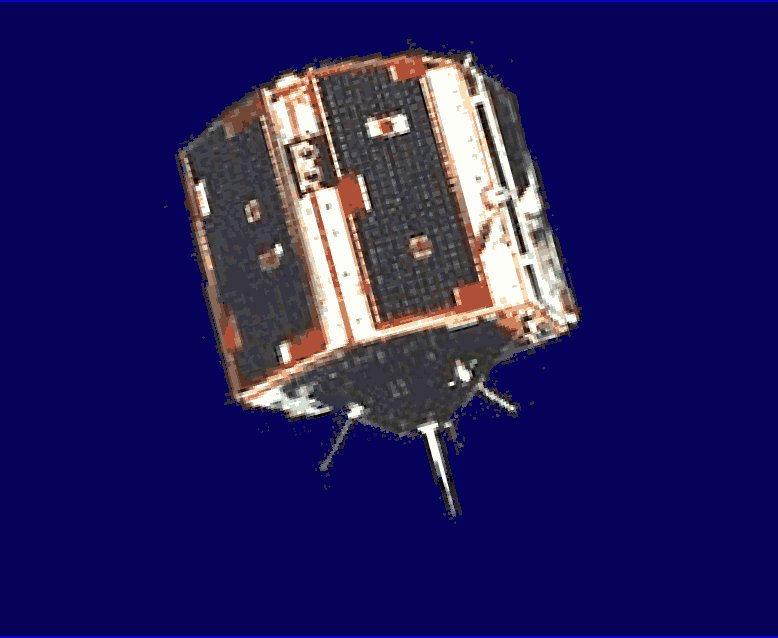 One amateur satellite, AO-24.
One amateur satellite, AO-24. A useful page of news and other information relating to Amateur Satellites, with a bias towards Amateur Radio, can be found here on the RSGB site, the RSGB being the Radio Society of Great Britain - a major coordinating society for Amateur Radio and associated activity.
Following on from this, the AMSAT amateur satellite organisation also have a home page with some interesting topics and links - by clicking here you can take a look at that page.

 You can E-mail the author of these pages
(Trevor Gale) by using this link. on the
Dutch Internet service provider XS4ALL.
You can E-mail the author of these pages
(Trevor Gale) by using this link. on the
Dutch Internet service provider XS4ALL.
